Village of Esna, former parish office and Villismägi hill fort
VILLAGE OF ESNA
Well, the place has become famous because of a TV soap opera, but before it was shown on telly this village in the middle of Estonia had been through busier and quieter times. The present star village status has added a little colour – but Esna has a character of its own and village life goes on as usual.
Esna is situated in Kareda Parish, Järva County and has always been a lively village. The place got so much busier after the Russians had built a narrow-gauge line of Türi–Paide–Tamsalu during WW I and Esna got its first railway station. The railway line was constructed for strategic reasons as it had to ensure a better protection against the advancing Germans. But it was negligently built and could not be used in stormy and cold weather in winter, so it was temporarily unused. For the most part of the year, however, the trains did run – and railway brought big changes to Esna.

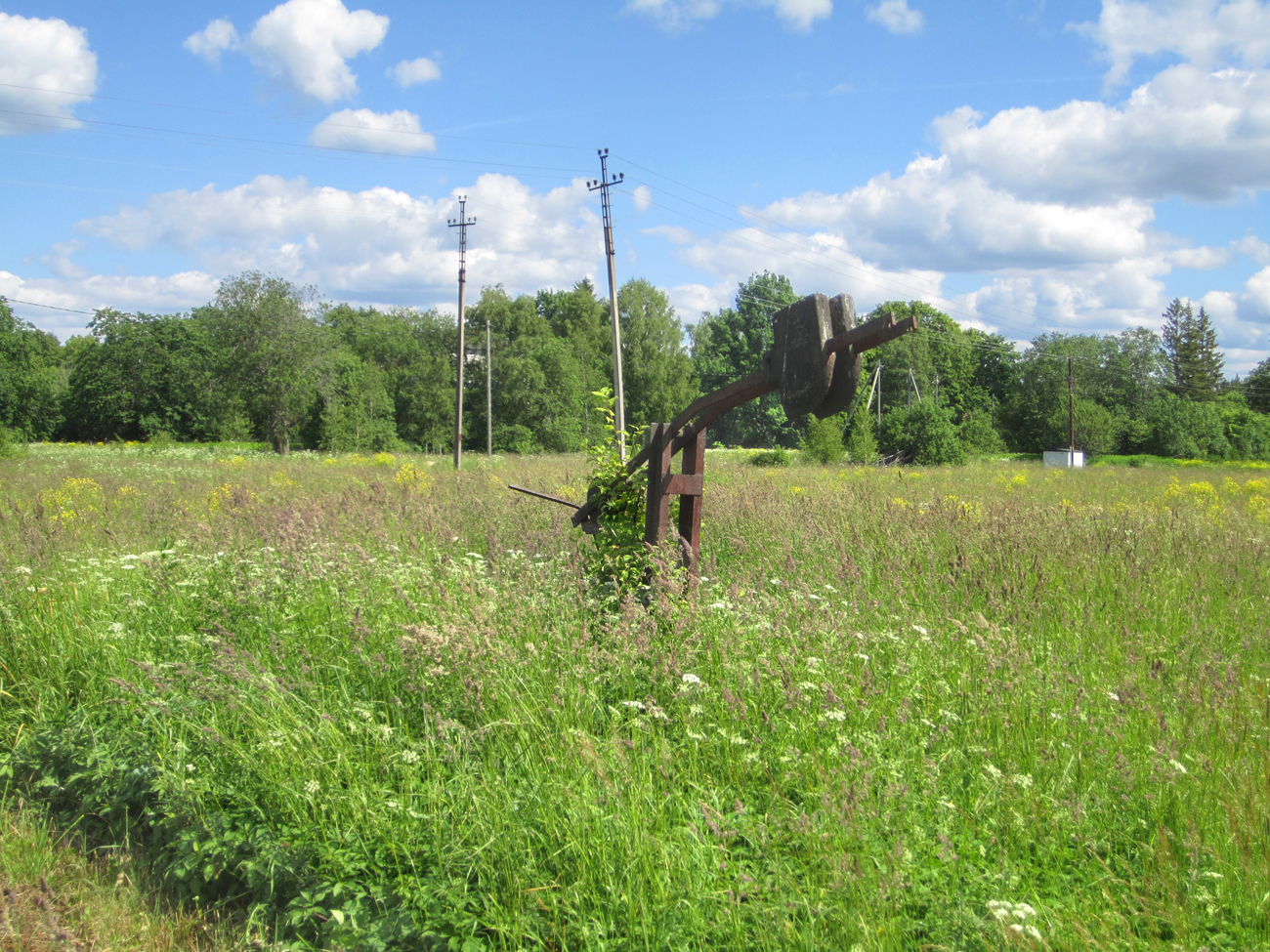
A settlement grew around the station. In 1919 the enterpreneur Friedrich Aavik built five houses, a sawmill, and a flour mill. In 1927 he brought electricity into the mill. The settlement grew at a faster pace when Peetri Consumers’ Cooperative moved here in 1924–25 and vital services such as a pharmacy and a shop for alcoholic drinks were established, and a tailor, a baker, a blacksmith, and other artisans opened their businesses here. There was even a place that sold musical instruments. Esna became a centre for the surrounding parishes and people went to Peetri only if they wanted to go to church.
The village is fun to walk through . If you know something about the past, you will notice signs of an enterprising spirit, a bourgeois self-awareness and a busy life – this was Esna in its heyday, where now total silence reigns. As was obligatory there is a main street – Pikk (Long) Street. Esna was laid out on a linear plan already in the 1920s, although linear villages are not typical of Central Estonia.
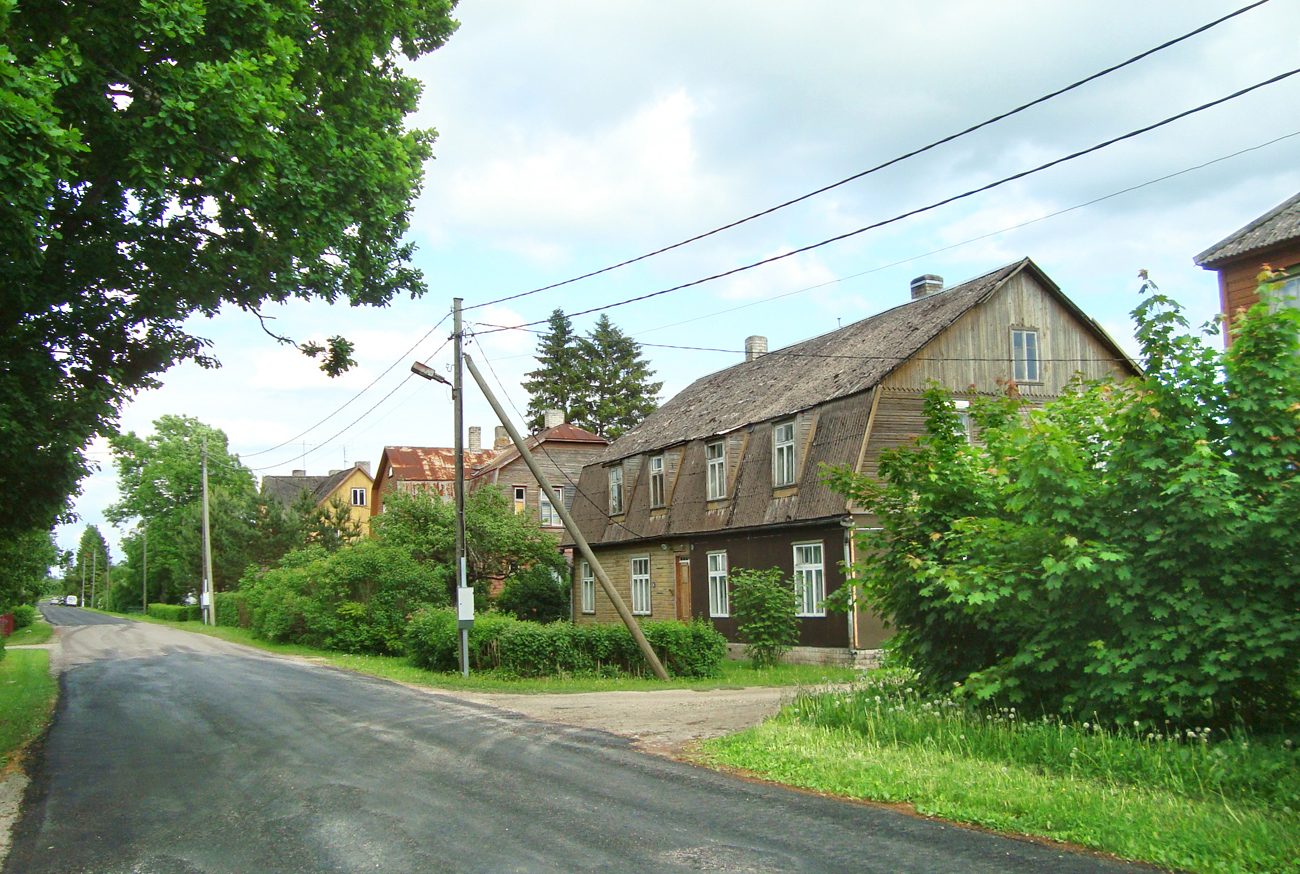
The oldest building in Pikk Street is where alcohol was sold. At the juncture of Pikk and Jaama streets the village people gather on New Year’s Eve, a tree stump is cut into four and the New Year is shown in. The house where the “neighbour’s girl” lives is also in the main street. It used to house the local government’s office and a library, now the village society convenes here.
An old shop in Jaama Street was closed down at the beginning of this century. The window is still decorated in the Soviet style. Before Soviet rule it was a cooperative shop. Now the nearest shop is in Peetri, today not even a mobile shop or a mobile bank comes to Esna.
The former mill that belonged to Aavik in Jaama Street, where locals brought their grain to be ground until even the 1970s, has fallen into disrepair. The old station, a fine two-storeyed wooden building with a stepped hip roof belongs to the inheritors of the old stationmaster. The Finnish owner of the rail workers’ dwelling keeps a hostel, visited mainly by hunters. The railway tracks are overgrown. There is a pond nearby and next to the pond there is an open place with a stage and the swings, where bonfires are built at midsummer.
About fifty people live in Esna, half of them elderly people who remember that the village has seen better times. The train stopped at Esna from 1920 to 1972. It was possible to board the train here and travel via Tamsalu to the capital city. Even in the middle of the last century Esna was busier. But after the trains had gone, people left, shops, a post-office, a pharmacy and a hairdresser’s – they all disappeared and life stagnated. While in 1986 there were 126 inhabitants, now only fifty are left. However, when looking around and talking to people, you will have a feeling that Esna is on the threshold of a change. There are promising signs of recovery.
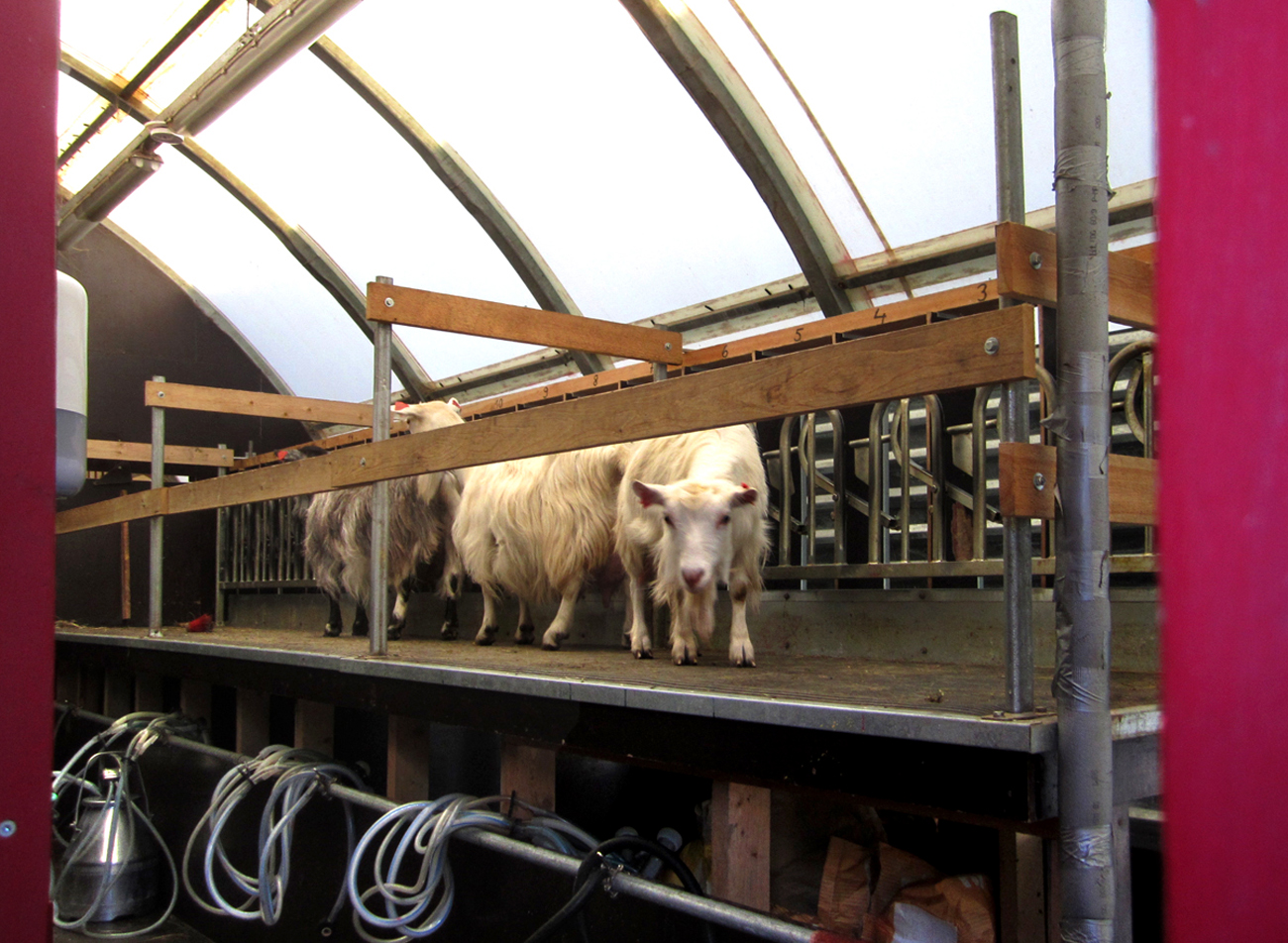
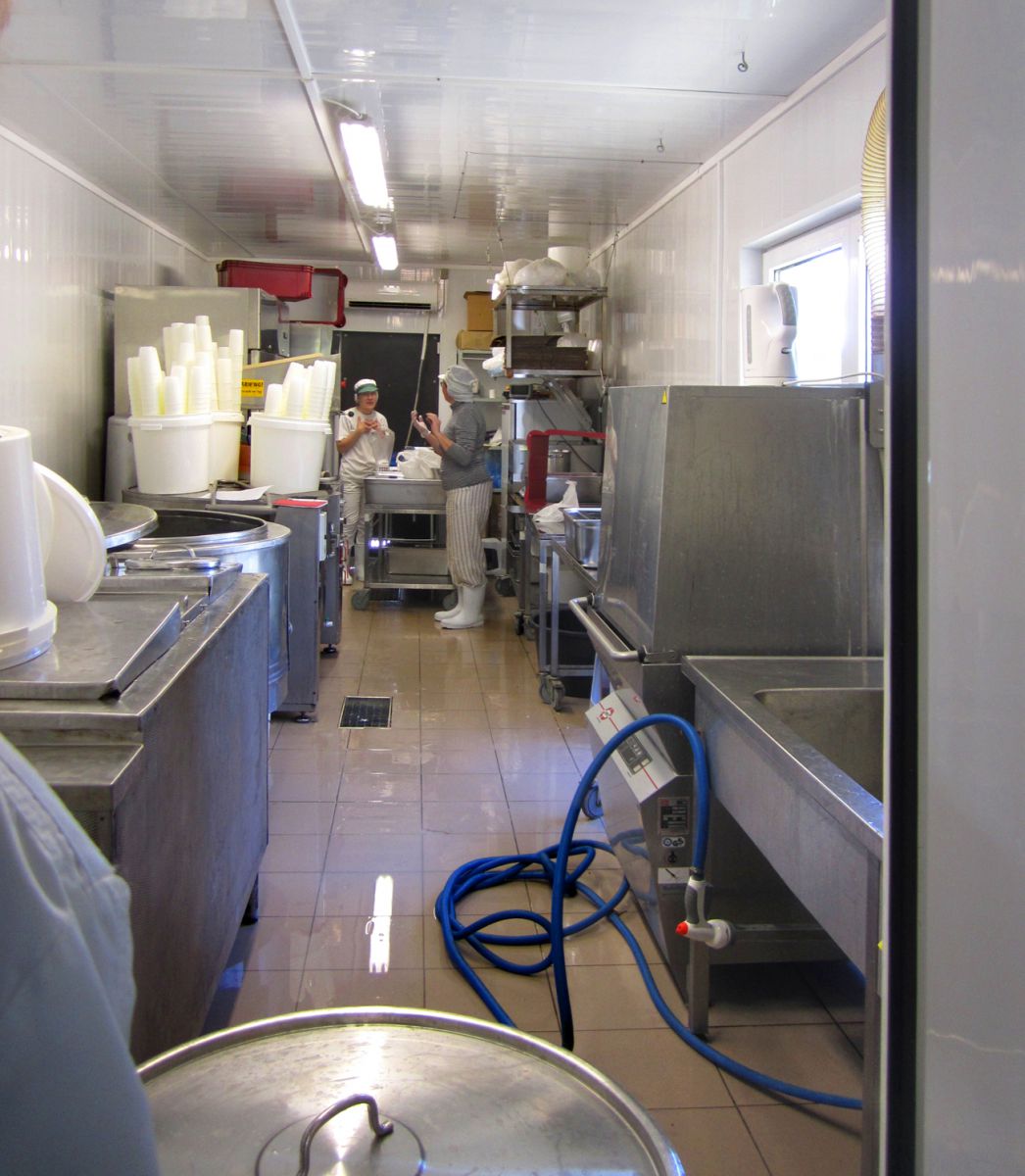
One of the new landmarks in Esna is Kalamatsi DAIRY, started by Aita and Jaan Raudkivi. Aita came to Esna, when Esna Manor was looking for people to take care of a herd of goats and make goat cheese. Aita was keen to come and put into practice the skills that she had learned under European cheesemakers. Jaan had settled in the house built by his great-grandfather in Esna.Together they founded a dairy and started cheesemaking in 2011. And there are four children in the family. The cheese that they are making is delicious! If you haven’t tried it yet, you’d better hurry up!
Daila Aas, 2015
FORMER PARISH OFFICE IN ESNA
During the late 19th and early 20th century about twenty parish offices were built in Järva County. In 1893 parish offices were constructed in Koigi, Ambla, and Väätsa. At the same time a log building was started at the southern edge of Kareda village, but it burnt down. The building had been designed by the master builder Piilmann, who came from Väätsa. A new stone building with a similar plan was completed under the supervision of the master builder Tarjus in 1896. The overall costs ran into 5000 gold imperial rubles and this was collected as an annual tax from the nearby farmers. There were more than 3000 inhabitants in Esna Parish in those days! A courtroom, cells (they are still intact), the parish clerk’s office and living quarters, etc. were planned. In the early 1950s the building was redesigned as the living quarters for the teachers of Öötla School, with partitions and furnaces built in the rooms.
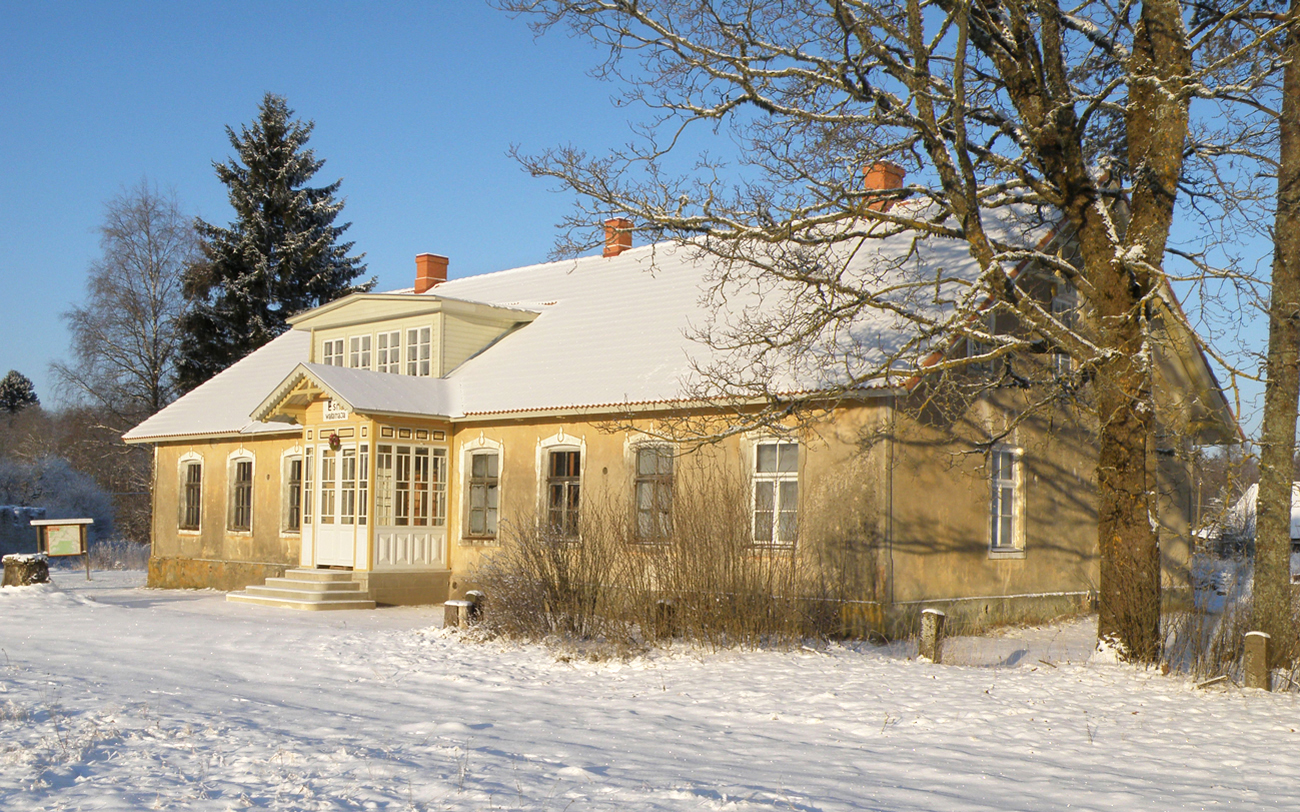
Former parish office in Esna. Photo Tõnu Taal.
The building, which luckily survives, was rented out to a non-profit organisation established ten years ago and called Karessen for twenty-five years without charge by Kareda Parish. The young people from the surrounding villages are in charge now . In 2013 a new roof was built with the support of the LEADER programme and, in summer and autumn 2015, the glass veranda of this venerable building was reconstructed with the help of the National Foundation of Civil Society. To learn more about Karessen activities, join them on Facebook.
Tõnu Taal
VILLISMÄGI HILL FORT IN KAREDA PARISH
Villismägi (Vilismägi) – a hill fort from the first millennium, and most probably, a place that provided shelter, is the smallest of ancient defensive structures in Estonia. The hill fort is situated on the lands of Villismägi Farm, about 50 metres to the south-east, in the grove of alders in Kareda Parish, Järva County. It is quite hard to climb the hill fort from the roadside as the slope is steep, but there is a good view of the flat fields.
„Villismägi is situated on a field of Esna Manor, in the direction of Ammuta village. It is small, but quite high, the hill has a steep slope on one side, and gentle slopes on other sides. The hill is covered by trees and it has the shape of a skin blister or bump. This is probably the origin of the name...”
EKLA, f 200, m 11:1, 3 < Peetri khk., Esna m. < Virumaa, Venevere – Rudolf Stokeby < Marie Laane, 44 a. (1929)
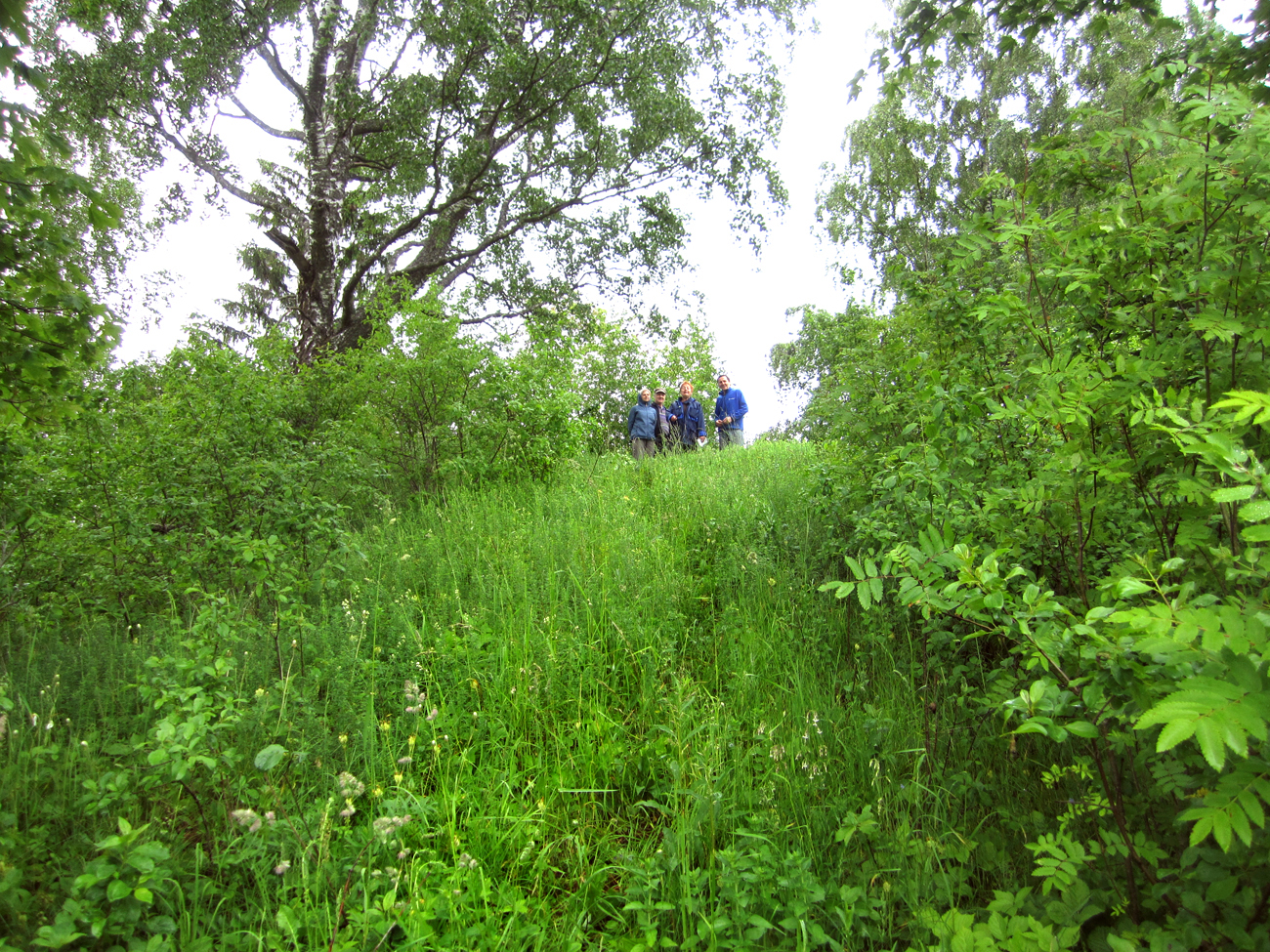
Sources
Verni Leivak. Esna, kuulus üle kogu maa. – Postimees. Arter, 26. okt. 2013.
Tiit Efert. Noore pere meierei. Kirju nagu vanaema moosirull. – Eesti Päevaleht. LP, 12. sept. 2015.
https://reis.postimees.ee/2575380/esna-kuulus-ule-kogu-maa
https://virumaateataja.postimees.ee/253678/tamsalust-turile-viiv-matkarada-kogub-toetust
https://et-ee.facebook.com/people/MT%C3%9C-Karessen/100064779454188/
https://jarvateataja.postimees.ee/870700/tapeedikiht-peitis-seinamaalinguid
https://www.aripaev.ee/uudised/2015/07/16/kalamatsi-meierei-tubli-vaiketoostus-ja-elustiiliettevote-maal
https://register.muinas.ee/public.php?menuID=monument&action=view&id=9602
https://www.folklore.ee/radar/story.php?area=Peetri&id=1818
